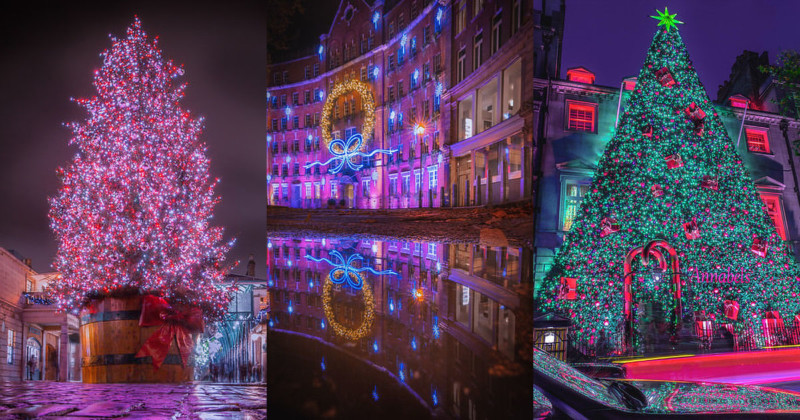
It’s the most wonderful time of the year! Streets are filled with joyful songs and gorgeous light displays. Some Christmas trees and illuminations are so large that photographing them can be tricky. Next are some tips and composition ideas, with examples, that can help you take better photos this holiday season.
Generally speaking, aim to photograph during blue hour — the hour before sunrise and after sunset — because the contrast between the bright lights and the sky won’t be as strong. If you don’t get all your shots during those hours don’t worry. In fact, the majority of the photos showcased in this post were taken with a pitch-black sky.
You will be shooting during the evening and at night, so carry a tripod with you. Shoot wide — get a wide-angle lens (lower than 35mm) — to get as much of the scene as possible. Set your camera to manual mode and select the RAW image format to be able to recover highlights and shadows in post-processing.
Lines all the way! Composition is key. You might have a beautiful scene but if you don’t know how to present it to the viewer even the most beautiful details can be lost in the photo. If you are photographing a tree, don’t just take a photo of the tree, add a foreground that leads toward it.
The most common way to lead the viewer’s eyes is through lines. It’s important to take some time to look around and find those lines. You would be surprised how common they are, you can find them in places like escalators and on the ground.
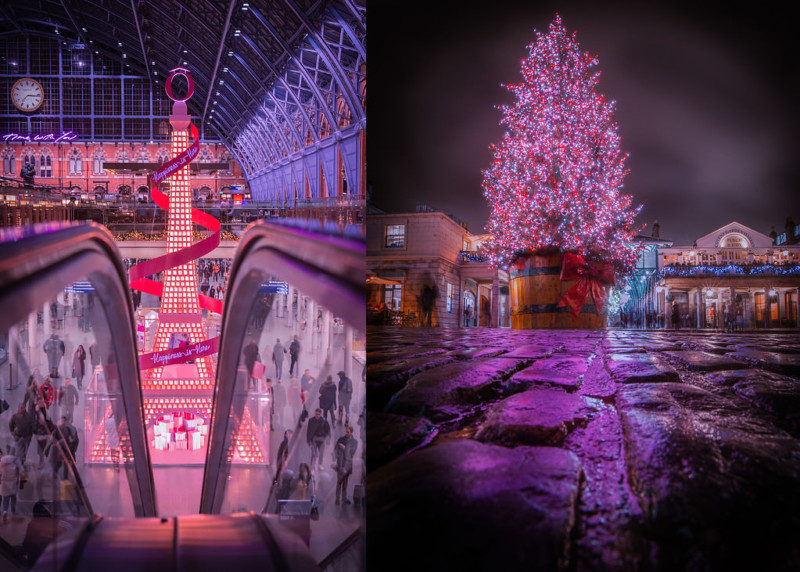
Fast track! If you don’t find lines that work with your composition, try to create them with light trails. Make a long exposure of cars and buses, or other light sources passing by. Your camera needs to be still, so a tripod is a requirement for this technique.
By rule, a light trail can be captured by using the lowest ISO, a small aperture (high f-stop number), and by leaving the shutter speed open for a few seconds. Experiment with different times to find out which exposure gives you the best result. The challenge is not to over-expose the light trails. Check on your viewfinder and histogram if the highlights are not blown out.

Curves? Yes, please! In addition to lines make sure to look for curves. They are even more dynamic! The type of curves that are most popular in photography are the C and S curves. You can find them in nature (ex: rivers and hills) and on the streets of most cities.
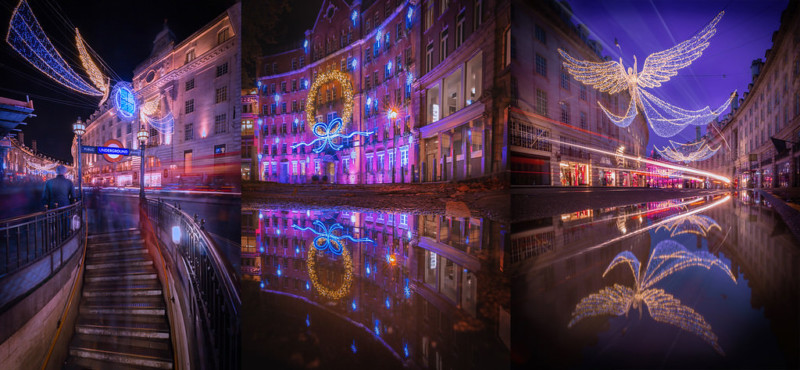
Crowds are welcome! During Christmas time, some cities, like London, can be quite crowded with tourists. If you can’t escape the crowds you can deliberately add people to your composition to give the viewer a sense of perspective. It’s a great way to display how magnificent and large some light displays are. Blur the people with a long exposure to show the movement and energy of the place or go for a still shot like the one with a silhouette.
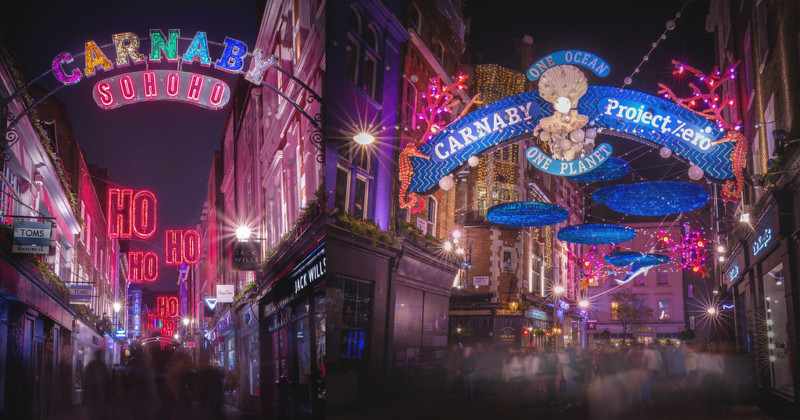
Double the scene! Use reflections to do more creative work. Reflections can double your subject, add texture and balance your photo with symmetry. Water is often used in reflection photography. In addition to natural pools, like lakes and rivers, puddles are also popular, especially in cities.
Take a walk after a downpour and scout for puddles. To photograph them, make sure to position your camera and tripod very close to the ground. You can also find other reflecting opportunities in buildings with glass and steel surfaces, wet pavements and even cars, as you can see in the examples below.
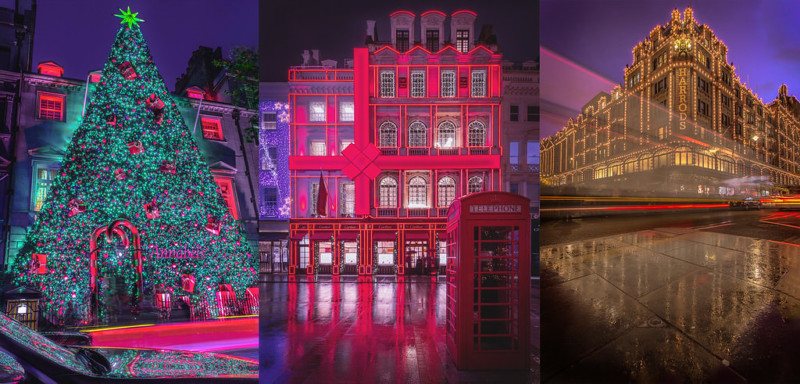
Remember to look down! Try to find rooftops and balconies available to the public in the area. Shooting from a high vantage point with a wide lens is a great way to capture the colorful avenues and wooden chalets of Christmas markets. Higher angles can also be used to get more than one Christmas display in the same frame.
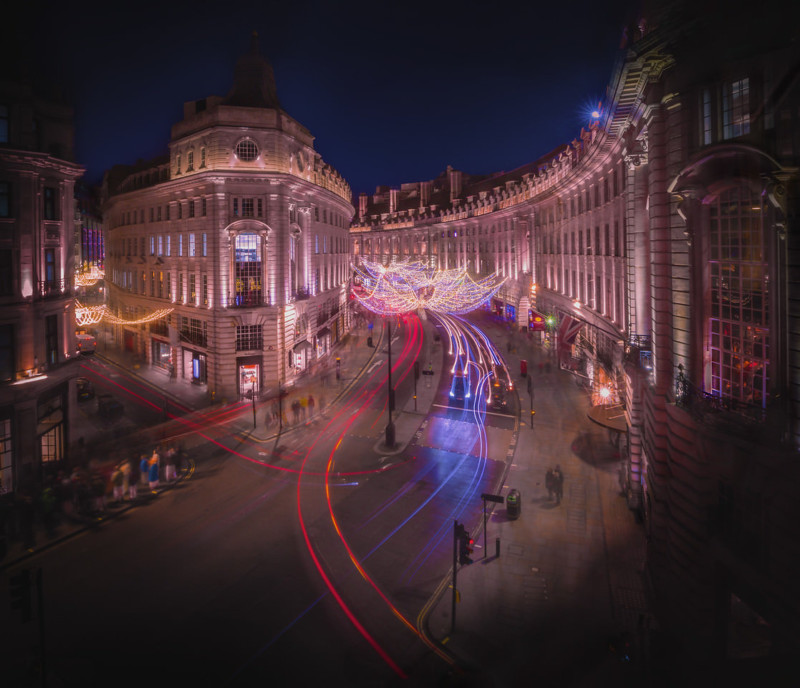
I hope that this was informative. I would like to wish you a wonderful holiday season with many photo opportunities ahead.
About the author: Mara Leite is a globetrotting photographer capturing the vibrant colors of the world through landscapes and cityscapes. The opinions expressed in this article are solely those of the author. You can find more of her work on her website, Facebook, Twitter, and Instagram. This article was also published here.